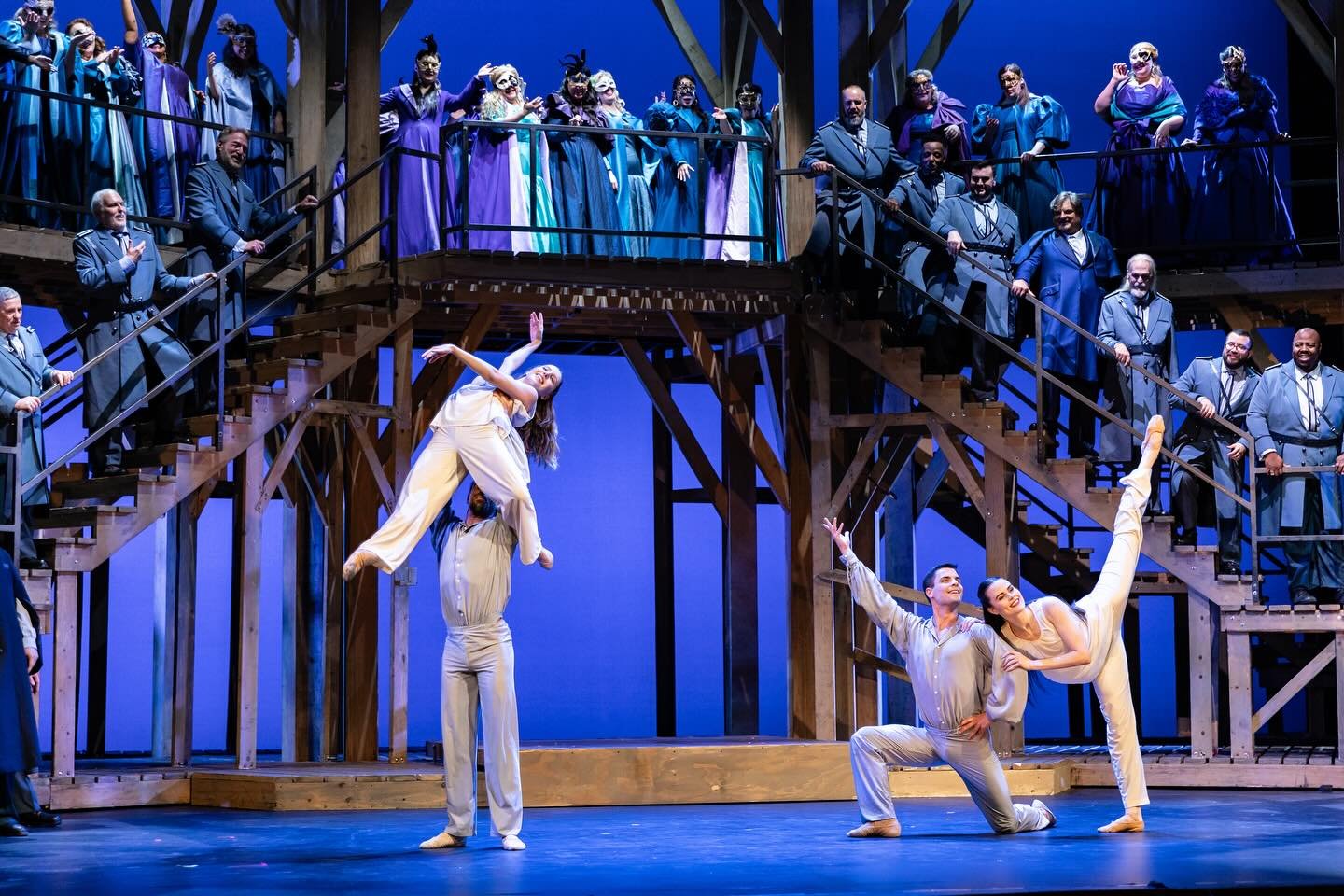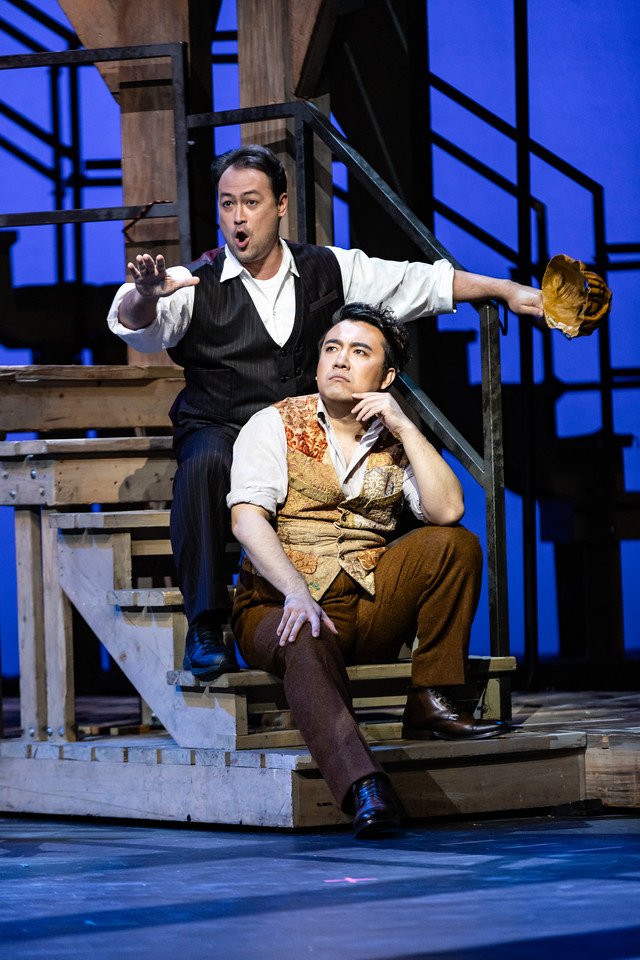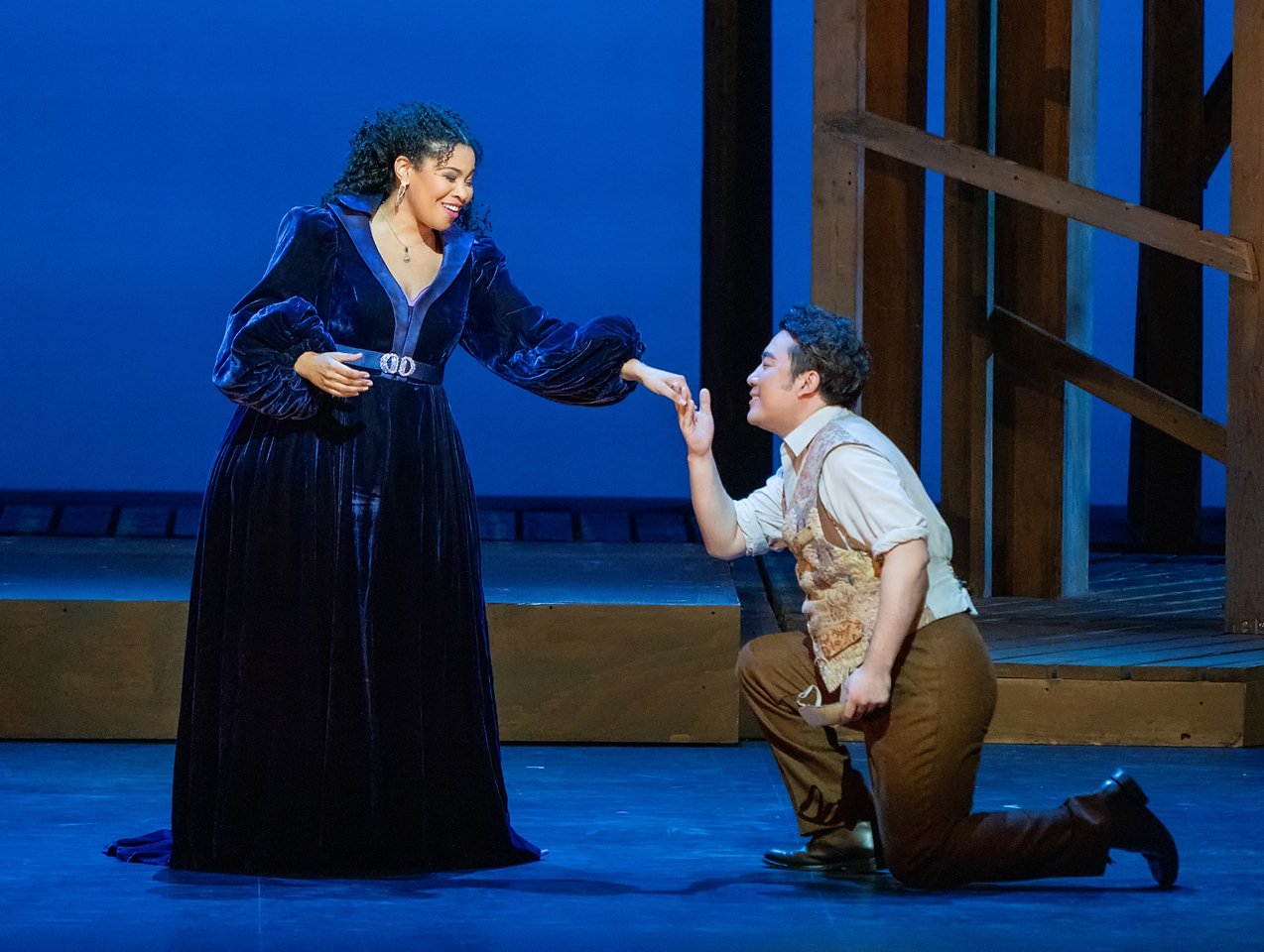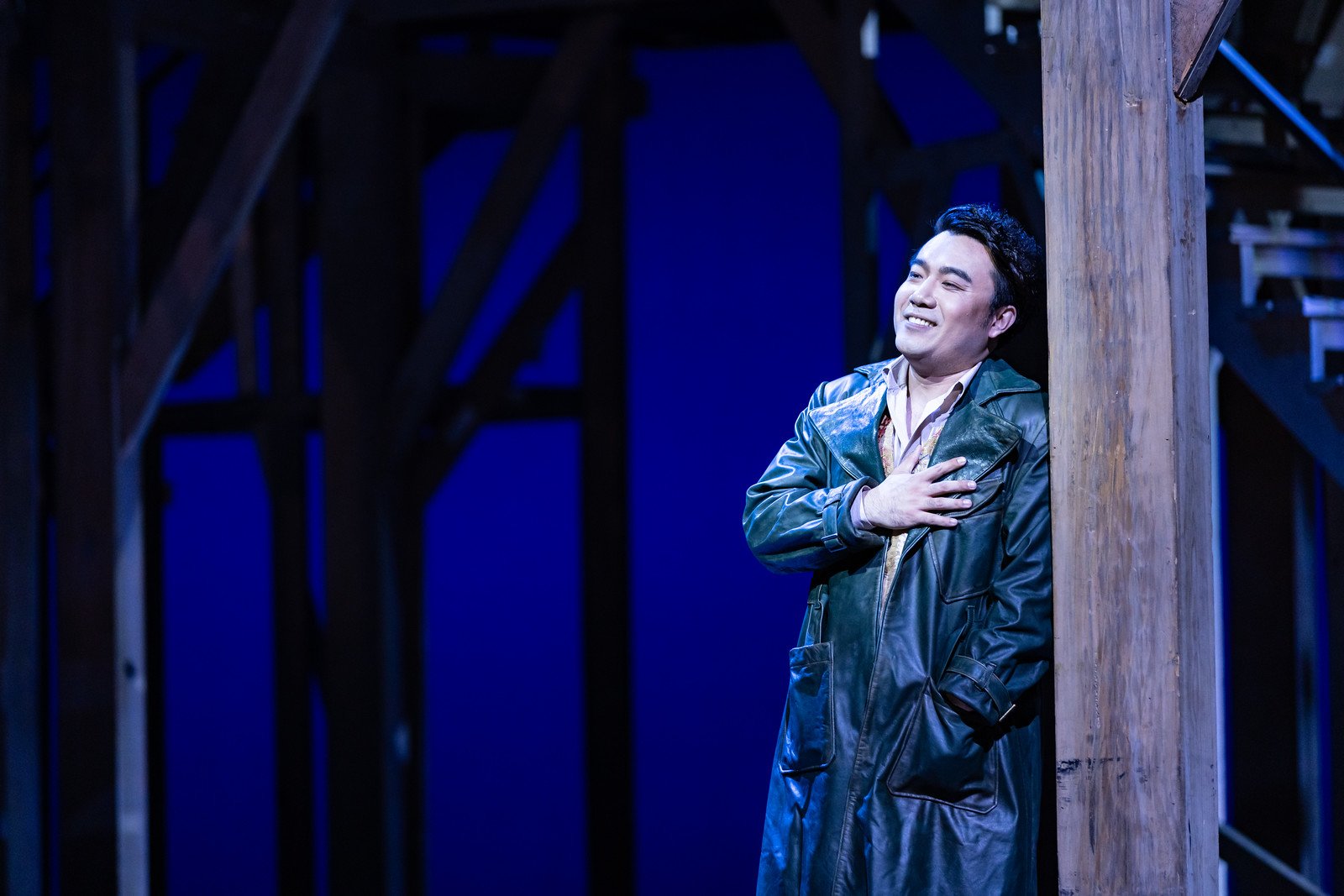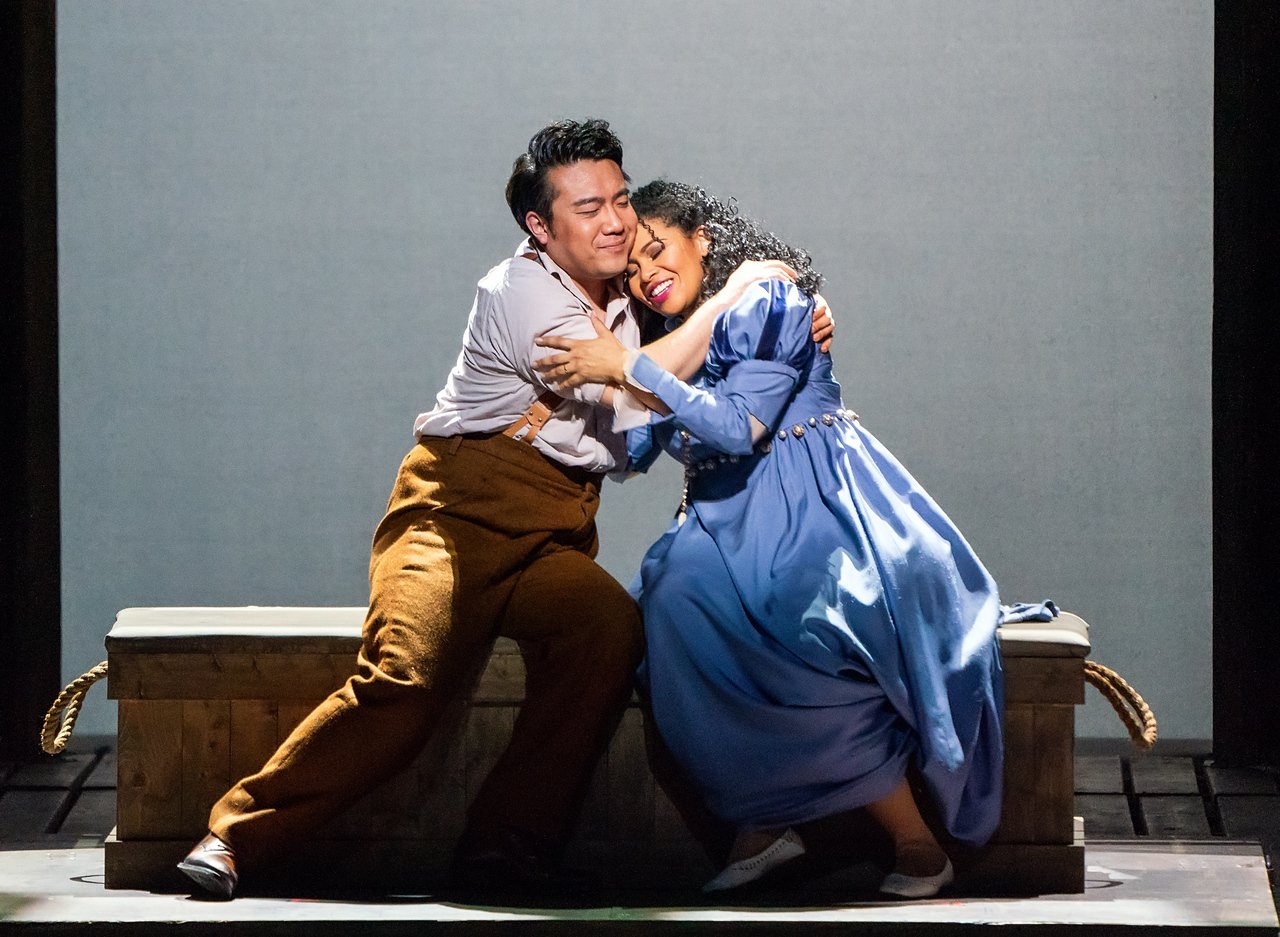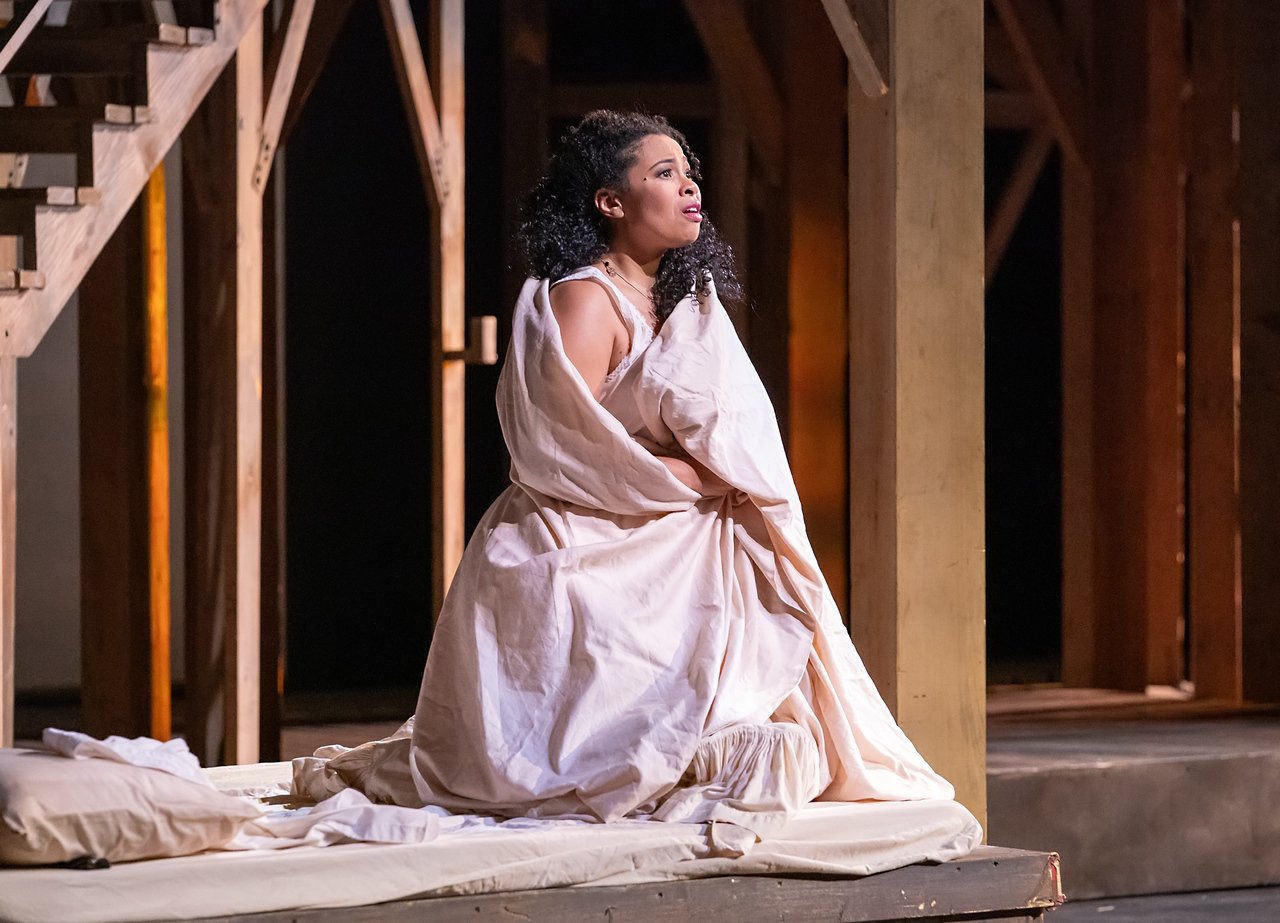‘Romeo and Juliet’ @ The Dallas Opera
Photos by Karen Almond and Kyle Flubacker
—Gregory Sullivan Isaacs
The Dallas Opera’s production of Gounod’s Romeo and Juliet is vocally alive and dramatically dead.
If this were a production in the 1950s, this wouldn’t be surprising. Back then, we were used to this sort of thing, sometimes irreverently referred to as the “park and bark” style of singing. TDO’s production, directed by Romain Gilbert, wasn’t quite that static, but the singing certainly outshone the minimal staging. For example, the two protagonists frequently struck the old-fashioned “duet pose" (facing outward with Romeo slightly behind Juliet) made famous in the 1930s by lovebirds Jeanette MacDonald and Nelson Eddy in movie musicals such as Rose-Marie.
The plot, in case you slept through your English Lit classes, concerns the high-toned Capulet and Montague families of Verona, who have nursed a generational feud. (An American equivalent, though of rougher origins, might be the Hatfield-McCoy kerfuffle, which reportedly sparked over ownership of a hog.) Romeo (a MontagueI) and Juliet (a Capulet) fall instantly in love at a masked ball and are not aware of each other's lineage. Of course, such a situation can only end in tragedy.
Golda Schultz as Juliet and Long Long as Romeo deliver some lovely singing. Schultz’s voice has the required flexibility, combined with a deeper, richer sound than the usual coloratura voice one expects to hear. Long’s voice sits somewhere between a lyric (for which the role was conceived) and light spinto categorization. More emphasis on lyric delivery would better fit the role than the belted Italianate sound he uses most of the time.
The secondary roles add much of the substance that brings the drama to its fateful conclusion. Friar Laurence unwittingly creates tragedy by secretly marrying the pair, and Raymond Aceto brings impressive vocalism to the role, if not the gravity such actions require. In the “pants part” of Stephano, mezzo-soprano Emily Sierra is believable as the teenage boy. As Gertrude, Juliet’s attentive nurse, mezzo-soprano Claudia Chapa provides a protective aura around Juliet, but knows when the situation evolves beyond her abilities.
In the duel that sets the disaster in motion, Eugene Villanueva is excellent as Romeo’s sidekick Mercutio, and Andrew Turner offers a convincing contrast as Tybalt. Erik Earl Larson brings some nobility to his role as Count Paris.
It was a pleasure to see and hear Donnie Ray Albert as Lord Capulet. As one of the operatic superstars who makes his home in the Metroplex, he has been sadly absent from local productions. His definitive performances as Porgy in the Gershwin opera are legendary, and in this production his voice is as dark, rich, and expressive as ever before.
In other roles, Kevin Thompson is excellent as the Duke of Verona, and Navasard Hakobyan excels as Gregorio—as do Nathan Bowles as Benvolio and Malcolm Payne Jr. as Friar Jean.
Principal guest conductor Nicole Paiement does a fine job, though there was some ensemble roughness at the start that settled down as the opera progressed. Guest chorus director George Gregory Hobbs did a good job blending the voices—not an easy assignment with choruses made up of aspiring opera singers.
John Conklin’s and Julia Noulin-Mérat’s set design, a co-production with the Houston and Atlanta Operas, resembles a semi-circlular structure built from widely spaced Lincoln Logs. Perhaps the upper and lower levels were a hat tip to the design of Shakespeare’s Globe Theatre. However, much like the set for TDO’s recent Elektra, this set-up creates dangerously steep stairways.
Gregory Gale’s costumes are a mixed bag of eras and genres, mostly from the 1950s, drawn from the luggage of various operetta touring companies. The Capulet men are dressed in vaguely military garb, perhaps borrowed from Nelson Eddy’s Canadian Mounties. The Montague men are dressed in Kentucky jeans and flannel shirts drawn from yee-haw musicals such as Oklahoma!. The women are stuck in flouncy ball gowns—appropriate for the first act’s masked ball, but not so much for the rest of the opera.
The production has just one intermission, created by running the first three acts together. It’s a long sit. However, the last act is well worth the wait.
WHEN: March 1, 3, 6, and 9, 2024 (at publication, two performances remain)
WHERE: Winspear Opera House, Dallas Arts District
WEB: dallasopera.org

